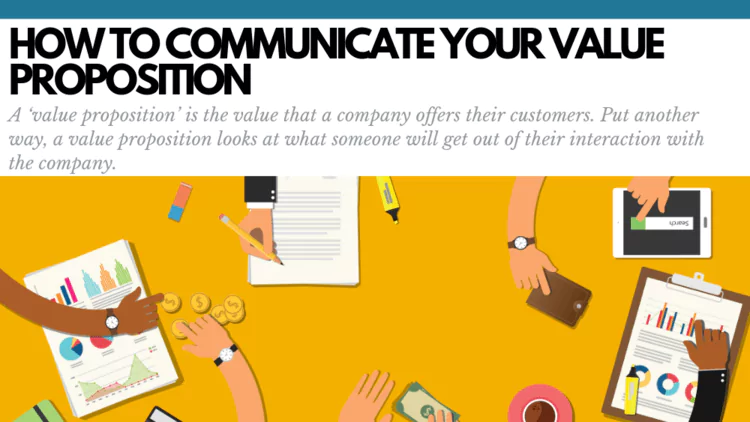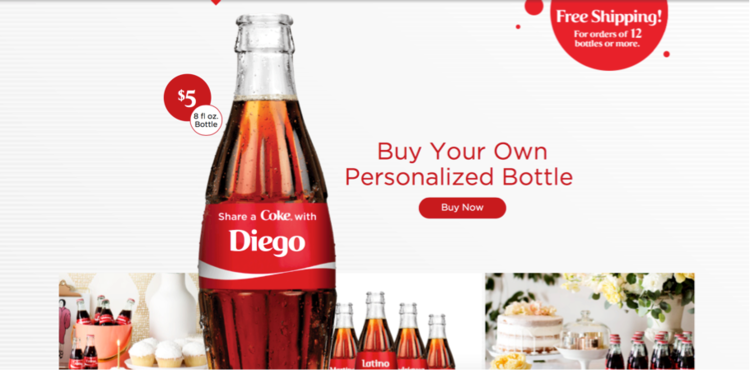Originally published September 2, 2019 , updated on September 6, 2024
In business, people tend to use a lot of jargon. Many of these terms are quite ethereal and don’t accurately describe what is being referred to. Take, for instance, the word ‘strategy’. The way that businesses use this term conjures up, in the minds of a marketer or small business owner, a lengthy document. This document has specific sections they need to fill. This is despite the fact that these may not be relevant to your business. At its core, a strategy is a roadmap of where you want to go in your business. It can be as short as a page or a mind map or it can run into a myriad of pages. The type of business you run dictates what format this document will take.
The term ‘value proposition’ is another one of these types of terms. In this article, we look at what ‘value proposition’ means and how you can communicate this to your customers.

What is a ‘Value Proposition’?
A ‘value proposition’ is the value that a company offers their customers. Put another way, a value proposition looks at what someone will get out of their interaction with the company.
As an example, Wordstream has listed a number of value propositions that have been developed by well-known companies:
-
Uber: “The Smartest Way to Get Around”
-
Apple iPhone: “The Experience IS The Product”
-
Slack: “Be More Productive at Work with Less Effort”
In a couple of words, these value propositions communicate to customers exactly what they will be getting from the company:
-
With Uber, you know that you will travel in the most convenient way possible.
-
You know that Apple will give you a superior experience with their iPhone.
-
You know that Slack facilitates you being more productive without the hassle of admin.
How do you Communicate a Value Proposition?
A company’s value proposition forms part of their brand. A ‘brand’, according to Jerry McLaughlin in his article entitled What is a Brand, Anyway?, is:
“… what your prospect thinks of when he or she hears your brand name. It’s everything the public thinks it knows about your name brand offering—both factual (e.g. It comes in a robin’s-egg-blue box), and emotional (e.g. It’s romantic). Your brand name exists objectively; people can see it. It’s fixed. But your brand exists only in someone’s mind.”
For example, when people see the Coca-Cola brand name, they think about certain things. For example:
-
The way it tastes, and
-
Their experience with the product.
Yes, the logo and tagline do form essential parts of a brand. This is because these are the outward symbols that customers recognise. However, a brand goes far beyond this.
Digital Marketing and Branding
Technology is changing so quickly that it’s quite difficult to keep up. Digital advancements have been made to facilitate our lives however, we still want to keep that personal touch. This is why the feared ‘robots’ will never take over.
These technological advancements have made it much easier for us to market our products and/or services. We have also been able to popularise our company’s brands and make our target markets aware of our value propositions.

Social media marketing is one of the best ways in which to showcase your brand and value proposition. Using this method of communication you can show your target market and existing customers:
-
Who you are,
-
What you stand for,
-
What you offer, and
- The value your offerings will give customers.
Dove’s Self-Esteem Campaign is a great example of how they communicated their brand using the following social media platforms:
-
Facebook,
-
Twitter,
-
Instagram, and
-
YouTube.
The organisation commissioned a third-party to research self-esteem. Dove used this research in its television and print advertising as well as its social campaigns. Hashtags – such as #RealBeauty, #NoLikesNeeded, and #SpeakBeautiful – were used on social media to encourage users to boast about their inner beauty. When Dove discovered that 70 percent of women don’t feel that they are correctly depicted in advertising, the company took the decision to not retouch all photos used in its marketing. Dove has been putting together powerful, engaging campaigns around self-esteem for a long time. This is a proof of the brand’s ability to make waves for positive change and make it part of their brand identity.
Content Marketing in Value Proposition
Another very powerful way that brands can communicate their value proposition is through content marketing.
The Content Marketing Institute defines ‘content marketing’ as “… a strategic marketing approach focused on creating and distributing valuable, relevant, and consistent content to attract and retain a clearly defined audience — and, ultimately, to drive profitable customer action.”

Why content marketing is so valuable to brands is that it does not suffer from space limitations when it comes to communicating a company’s value proposition. By using a blog or a video, marketers are able to draw clients, make them invested in the brand. They are simultaneously made life-long brand advocates.
A great example is Coca-Cola’s “Share A Coke” campaign. The company gave Coca-Cola drinkers the opportunity to personalise a can of Coca-Cola with their name on it. The added a total of 150 of the most common names in Australia to the side of the bottles. People loved it and it generated a lot of buzz around the Coca-Cola brand.
Today’s market is absolutely drowning with brands. In order to ensure that you stand out from the crowd, you need to check that your brand and value proposition are unique. If they are not, you will be looked at as just being part of the crowd. This means that you must not rush putting together your value proposition. Take the time and think what you are bringing to the market so that you can ensure that you are proud of it.
Post Views: 1327


















